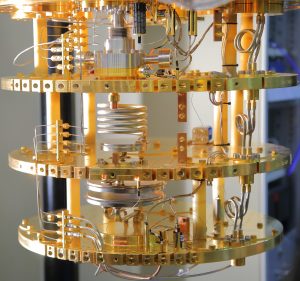
Science fiction often takes a cue from Physics but the opposite is also true, especially in the choice of acronyms. This applies to DART-WARS, an electronics and detectors related project whereby INFN will contribute to the development of technologies for the superconducting quantum computer.
It is a three-year research project, just approved and financed by the INFN V commission, which includes INFN Milano-Bicocca and Lecce units, Salerno associated group, Frascati National Laboratory and TIFPA (Trento), coordinated by Andrea Giachero (University of Milano-Bicocca).
The partners involved are INRIM, Fondazione Bruno Kessler and IBS-CAPP (South Korea).
DART-WARS, Detector Array Readout with Traveling Wave AmplifieRS, will develop wideband superconducting amplifiers, achieving high gain and minimizing the intrinsic noise close to the quantum level. “DART-WARS amplifiers, based on superconducting materials, will achieve high sensitivity, ensuring at the same time an electronic noise at the lowest value in nature, the so-called quantum level” – says Giachero.
New design solutions, various superconducting materials and advanced fabrication processes will be explored to create amplifiers with brand new features. These devices will be used to record signals from low temperature detector arrays, like MKID and TES, to perform measurements of fundamental physics and to read qubit arrays.
Frascati National Laboratory (INFN) participates at the DART-WARS project with the CryOgenic Laboratory for Detectors COLD group, which will supervise the fabrication of Traveling Wave Parametric Amplifiers and their characterization. Carlo Ligi, responsible for Cryogenics at the Accelerators Division, says: “In various fields of experimental Physics there is the necessity to detect signals weaker and weaker, for instance in neutrinos and dark matter research areas, as we are already doing at the COLD laboratory in QUAX experiment. Improving the quality of the signal amplification chain will boost the sensitivity of detectors with the aim of measuring single photons in the microwave range. Furthermore one can think to exploit these technologies for quantum computers”.
 INFN-LNF Laboratori Nazionali di Frascati
INFN-LNF Laboratori Nazionali di Frascati